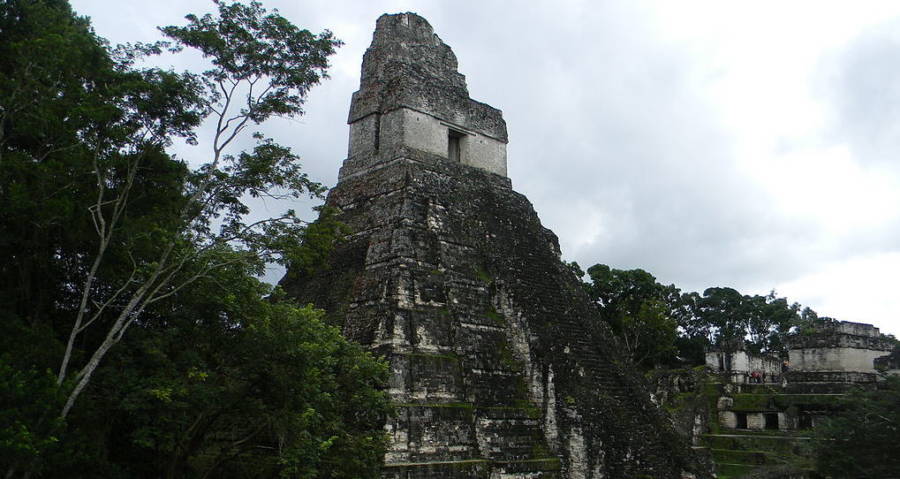Discovered at Last, What Destroyed the Mayan Civilization

The majestic ruins of the ancient Mayan civilization have long captivated the imaginations of historians and archaeologists. Yet, behind the awe-inspiring temples and intricate hieroglyphs lies a profound mystery: what caused the abrupt collapse of this once-thriving society?
The Rise and Fall of a Civilization
The Mayan Empire was at its strongest in the middle of Mesoamerica. It included parts of Mexico, Belize, Honduras, and El Salvador, as well as Guatemala today. The Maya built a sophisticated society with huge cities, complicated calendars, and a complicated way of running things. They were known for their achievements in art, science, and farming.
The Mysteries of Collapse

By the 9th century CE, the Maya towns that had once been busy were empty and covered in a mysterious cloud of abandonment. Scholars and researchers have been trying to figure out what caused this sudden drop for a long time. Many ideas, ranging from war to damage to the environment, have been put forward, but no solid proof has been found.
Revealing Reality: An Analysis of Climate
In a groundbreaking study published in Science, researchers may have finally unraveled the mystery behind the collapse of the Mayan civilization. By analyzing sediment cores extracted from Lake Chichancanab on the Yucatan Peninsula, scientists gained unprecedented insights into the climatic conditions that prevailed during the Maya's decline.
Deciphering the Clues: Drought and Dehydration
The analysis revealed a stark truth: a profound and protracted drought gripped the heartland of the Mayan Empire. Over the span of four centuries, annual rainfall plummeted by 41 to 54 percent, accompanied by a significant decline in humidity. These adverse environmental conditions dealt a devastating blow to agricultural productivity, undermining the very foundation of Mayan society.
A Fragile Balance: Human Impact on Climate
While natural factors undoubtedly played a role in the onset of drought, human activities may have exacerbated its effects. Deforestation, widespread among the Maya, likely contributed to the depletion of moisture in the region, exacerbating the arid conditions. Additionally, alterations in atmospheric circulation patterns and a reduction in tropical cyclone frequency may have further compounded the crisis.
Implications for the Present and Future

The findings of this study carry profound implications for our understanding of environmental dynamics and human civilization. As our planet grapples with the challenges of climate change, the lessons of the past resonate with newfound urgency. By acknowledging the interconnectedness of human actions and natural phenomena, we can strive to mitigate the risk of ecological catastrophe and safeguard the future of our planet.
The Quest for Understanding: Unraveling the Threads of History
As we peer through the lens of time, the story of the Maya civilization emerges as a testament to the fragility of human societies in the face of environmental challenges. Yet, even as we unlock new insights into the past, the veil of mystery surrounding the collapse of the Maya remains tantalizingly opaque.
Challenges and Uncertainties
Even though we have learned a lot about what happened to the Maya, there are still big gaps in our knowledge. It is now clearer that drought was a major factor in the collapse of the society, but there are still some questions about the exact processes that caused and maintained the dry conditions. Were changes in the way the climate works around the world the main cause of the change, or were local factors more important?
A Legacy with Many Facets
The Maya left behind a legacy that goes far beyond the walls of their old towns. It has echoed through time and changed how we think about human history and resilience. People are still amazed and impressed by what they did in art, science, and math, and their battles and successes serve as a warning to future generations.
Lessons for Today
When we think about all the problems we face today, the lessons the Maya taught us become even more important. The need for care and sustainability has never been greater in a time of fast environmental change and global connectivity. We can plan for a more fair and stable future by listening to the lessons of the past and taking a more comprehensive approach to protection.
The Journey Continues
It's not over yet in the search for answers about the Maya culture. We get a little better at understanding our shared human history with each new finding and big step forward. As scholars and scientists continue to dig up the remains of the past, the story of the Maya reminds us of how curious and determined people can be.

